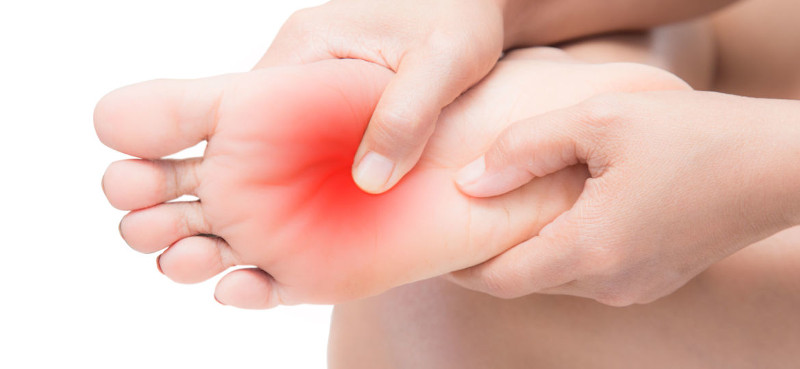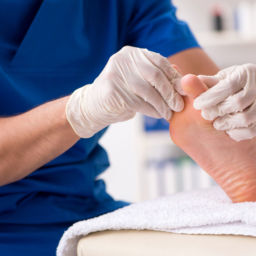
Unfortunately, many have heard of Diabetic Peripheral Neuropathy (DPN) or Diabetic Nerve Pain and suffer from the various effects of the disease. Before we dive into things, let’s define the terms.
“Diabetic,” relating to diabetes, a disease whereby the body can not properly metabolize sugar or can’t manufacture enough insulin; the chemical secreted by the pancreas, to metabolize and break down (glucose) sugar. “Peripheral”, relating to the end points of your body, namely feet, legs, arms, and hands. “Neuropathy”, relating to disease or dysfunction of nerves, causing diabetic nerve pain.
Causes
The cause of diabetic nerve pain or diabetic foot is still not fully understood, but everyone is in agreement that poor control of blood glucose (sugar) is the principal causative factor. The high amounts of sugar in the bloodstream significantly interferes with the nerves ability to function normally. Peripheral neuropathy can also be caused by other factors such as excessive alcohol consumption and exposure to certain harmful chemicals, but we are focusing on soley DPN.
Symptoms Of Diabetic Nerve Pain
Patients will commonly complain of burning, tingling, and numbness, especially of their feet, but it is not uncommon to have symptoms in their hands as well. As Podiatrists, we are principally treating the symptoms involving the lower extremities involving the feet and legs. This process can be significantly dangerous since patients often lose sensation to their feet, especially the soles, which raises risks of causing much harm unknowingly.
Consider the individual walking on a hot pool check of chattahoochee, or stepping on sharp infected objects such as glass or nails and not be able to feel the burning hot chattahoochee or pain from a puncture wound. These events can be disastrous causing severe burns and infection, which could result in many doctor visits, potential hospitalization with intravenous antibiotics and probable surgery to remove infected tissue and bone (and in some cases limb loss) if the process progresses and the patient has poor circulation.
Prevention
A good preventative step is strict control of your blood sugar with a combination of proper diet and medications. It is also important to never go barefoot, even in your house, to prevent complications. Visit your primary care physician often to monitor your blood sugar, and if necessary be seen by an endocrinologist. See your podiatrist routinely and refrain from doing any “bathroom surgery”.
Examination
Your doctor will perform a detailed exam to assess your presence or degree of involvement of DPN. A Semmes-Weinstein probe, which is a soft fine nylon filament, is applied to areas on the ball of your foot to assess your degree of sensation. If normal, you will be able to feel the filament’s pressure on your skin. More advanced testing such as a nerve conduction test may also be utilized. In addition, if there are any balance issues associated with your DPN, a MRI or brain scan may be ordered to assess brain function. In some advanced cases, a nerve biopsy may be taken and sent to a pathologist for a definitive diagnosis.
Treatment
Please note that unfortunately there is no cure; only usage of various medications and certain creams, but the hallmark of treatment is strict control of your blood sugar.
There are a number of different medications that are utilized for diabetic nerve pain. In fact, some patients take antidepressant meds such as Elavil. Besides various pain medications there are anticonvulsants such as Gabapentin(Neurontin) and Lyrica, which are commonly used and in some cases are very effective in reducing the symptoms of DPN. Another drug, Cymbalta, is also used. All of these drugs have side effects and require close monitoring. Topical treatments with medication applied to the skin are often employed, such as Capsaicin, a chemical derived from the pepper plant that has anesthetic properties as well as topical lidocaine gel and patches.
In some instances, it may be necessary to seek consultation from either a neurologist or pain management specialist to develop a customized treatment plan for you
Remember, a good diet, glucose control, exercise, and not smoking are important factors that will help your overall diabetic experience. Also, wearing sensible good fitting shoes, and not walking barefoot will help to mitigate the symptoms and onset of DPN.
As always, the podiatrists at Certified Foot and Ankle Specialists can help establish the best treatment plan for diabetic nerve pain. Come visit us at any of our 18 locations, including Coral Springs!
ByRichard J. Brietstein, DPM

